York
OS grid reference:- SE 603 517
The cathedral city of York, which is steeped in history, has so much to offer the visitor. The medieval walled city has its origins in 71 AD, when it was founded by the Romans, who referred to it as Eboracum, the invading Vikings later renamed it as Jorvik.
York Minster and St. William's College
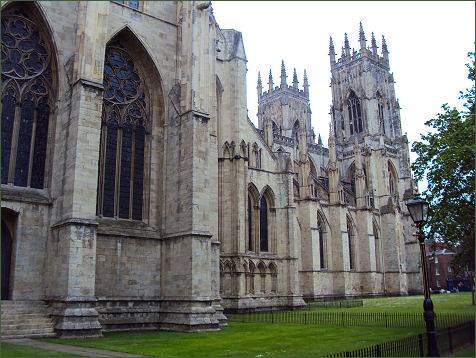
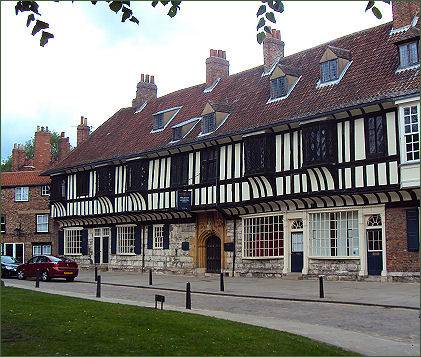
York has a medieval city wall which stretches for 2.5 miles, 18 medieval churches and several museums. Attractions include the magnificent York Minster, the largest Gothic church in Northern Europe, the National Railway Museum, and the Jorvik Viking Centre.
The River Ouse and the City Walls
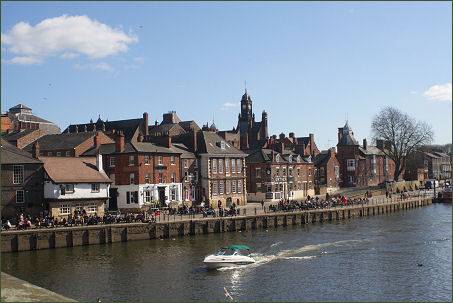
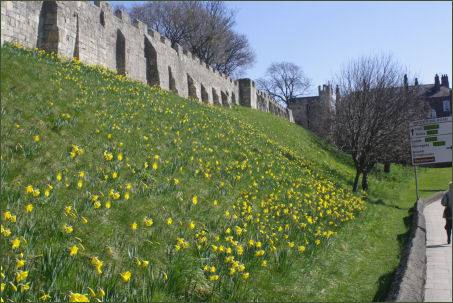
York Minster is a masterpiece in stone and stained glass with its foundations rooted in the early history of the nation. The Minster is built on the remains of the Basilica, the ceremonial centre of the Roman fortress at York, the central tower of the minster were built over one corner of the principia. The foundations of the Basilica are visible today in York Minster's Undercroft, Treasury and Crypt. Medieval St. William's College is situated in College Street, adjacent to the Minster. The black and white timber framed frontage of the building is decorated with several interesting features, including oak carvings, coats of arms, and a sundial. The college was built in 1465 for the Minster's Chantry Priests, who were paid to pray for the souls of the dead.
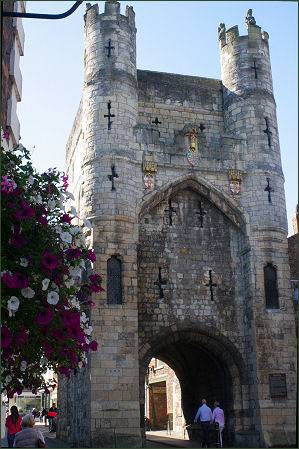
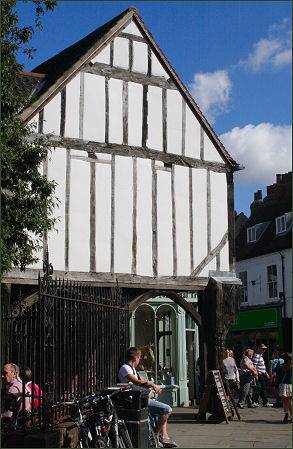
The Shambles is a meandering medieval street with much character. It features overhanging timber-framed buildings, some of which date back to as early as the fourteenth century. The street itself is mentioned in the famous Domesday Book of 1086. It has now become one of the premier shopping areas in the city and a great favourite with visitors to York.
Petergate, now part of the Minster Quarter, stands on the site of the Roman Via Principalis, the first century main east-west route through the Roman fortress. The street is so named due its proximity with York Minster, which is dedicated to St Peter. Petergate runs from medieval Bootham Bar, the Roman Prima Porta Dextra or right gate, to Kings Square, known to the Romans as Porta Sinistra, the left gate. One of the four main entrances through York's historic city walls, in common with Micklegate Bar, Bootham Bar was used to display the decapitated heads of traitors, including that of Thomas Mowbray, Earl of Norfolk and Earl Marshal, who led a failed rebellion against Henry IV in 1405. The heads of three rebels who opposed the restoration of Charles II after the Commonwealth period were placed there in 1663.
The Treasurer's House and York Street Entertainer
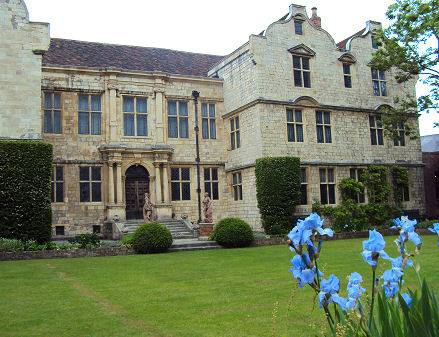
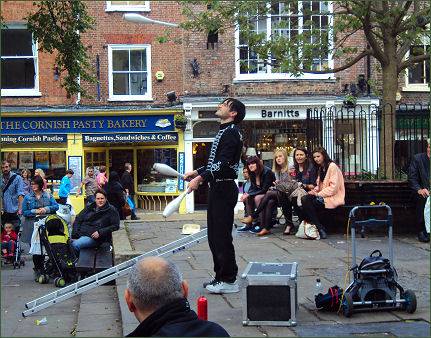
Medieval Clifford's Tower, one of the best known landmarks in York, offers excellent views over the city. The tower is all that now remains of York Castle, once the centre of government for the north of England. That building saw one of the most horrendous episodes in York's history, when in 1190, a mob of citizens rioted against the Jewish population of York, who took their own lives or were massacred within the tower.
Fairfax House stands in Castlegate near Clifford's Tower and is recognised as one of the finest Georgian town houses in England. The building dates to the early 1740s. Charles Gregory Fairfax, Viscount Fairfax of Emley purchased it as a winter home in 1759 and employed the Yorkshire architect John Carr to remodel the interior. The house encapsulates the elegant Georgian era with its decorative embellishments, stucco reliefs and ceilings, elaborate wrought ironwork and wood carvings. The Mansion House, the first civic residence in England, was built as a home and a place for the Lord Mayor of York to entertain visitors to the city, and also to house the civic collections. Still used today for the same purpose, the Mansion House is also open for visitors to explore and regular tours are available.
St. William's College and the Royal Oak
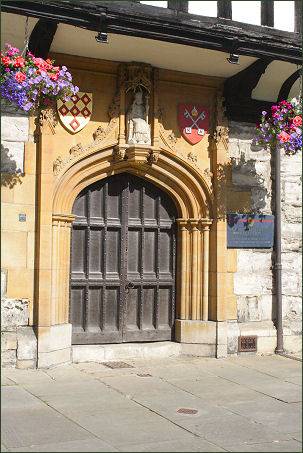
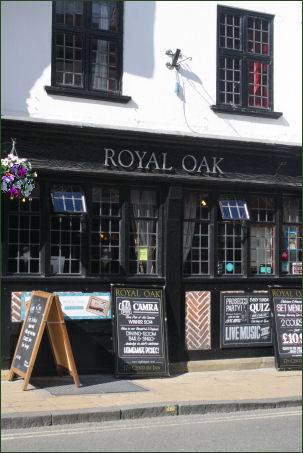
The city walls of York are the most complete example of medieval city walls still standing in England today and extend for 2.5 miles, enclosing a total area of 263 acres. York's original city walls were first constructed by the Romans in about 71 AD, to defend the Roman fort of Eboracum. Following the construction of the medieval city walls, Micklegate Bar, the most westerly entrance to the city, became the primary entrance into York. In 2014 the Jorvik Group, (which includes the Jorvik Viking Centre), took over the space within Micklegate Bar and created 'The Henry VII Experience'. They also replaced the contents of medieval Monk Bar and created The Richard III Experience.
Constantine the Great Statue and Inside the Richard III Experience at Monk Bar
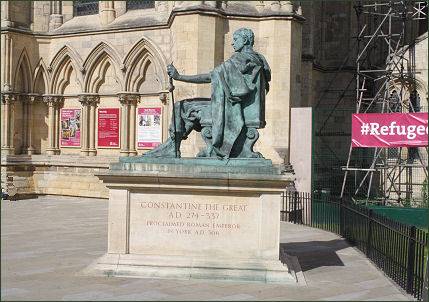
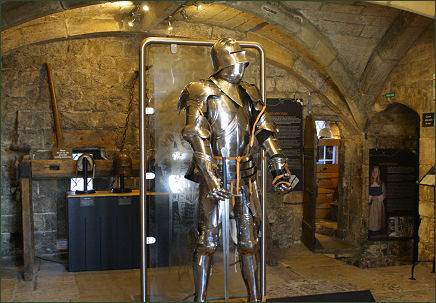
York Castle Museum offers the the visitor the opportunity to stroll down an authentically recreated Victorian Street and visit Dick Turpin's cell. As well as the Castle Museum, the city contains numerous other museums and historic buildings such as the Yorkshire Museum and its Museum Gardens, Jorvik Viking Centre, on Coppergate, the York Art Gallery, the Merchant Adventurers' Hall, at Fossgate, the reconstructed medieval house Barley Hall, and the Treasurer's House.At York’s Chocolate Story visitor's can discover the stories behind the greatest names in chocolate in York, unwrap the secrets of chocolate making, and even learn the art of the chocolatier for themselves. The National Railway Museum in Leeman Road York, forms part of the British Science Museum Group of National Museums and telling the story of rail transport in Britain and its impact on society. It has won many awards, including the European Museum of the Year Award in 2001. It is the home of the national collection of historically significant railway vehicles, as well as a collection of other artefacts and both written and pictorial records.
Guide to the Streets of York
| Coney Street | Coppergate | Fossgate | Goodramgate |
| Minster Close | Pavement | Petergate | The Shambles |
| Snickelways of York | Stonegate |
Guide to the City Walls
| York City Walls | Bootham Bar | Fishergate Bar | Micklegate Bar |
| Monk Bar | The Red Tower | Walmgate Bar |
York Museums
| Bar Convent Museum |
Henry VII Experience |
Jorvik Viking Centre | National Railway Museum |
| Richard III Experience |
Roman Bath Museum | York Castle Museum | Yorkshire Museum |
Churches of York
Towns and Villages of Yorkshire
